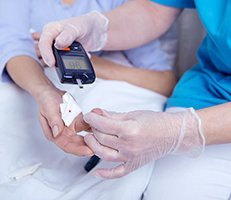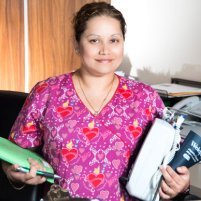In the Press
As an internationally known kidney specialist and Internist, Dr. Victor Gura has appeared on various news programs and in print. He is certified by the American Board of Internal Medicine and the Israeli Scientific Council. He is a member of the world-renowned Cedars Sinai Medical Center in Los Angeles and also serves as a Clinical Associate Professor at the David Geffen School of Medicine at UCLA. His invention of the Wearable Artificial Kidney (WAK™), the revolutionary medical device that allows the patient to go about their normal routine while undergoing daily dialysis, has been heavily discussed in the media.
National news organizations such as ABC and NBC have documented the beginning of the US clinical trials for the WAK™ that are being overseen by Dr. Gura. Major technological and business websites have also extensively reported on Dr. Gura and his revolutionary dialysis machine. These sites include: The Economist, Medscape, Tech Page One, Gizmodo, UW Today, Popular Science, and Gizmag.
If you wish to contact Dr. Victor Gura for a media appearance, you can do so through our contact page.
Second Annual Global Summit: Global Kidney Innovations-Expanding Patient Choices & Outcomes
The 2nd Annual Global Summit is going virtual! This year's meeting will continue to engage the top international experts in the field of kidney care including healthcare professionals, academics, government leaders and regulators, industry experts, entrepreneurs and patient advocates. This event is a partnership of the George Washington University School of Medicine, one of the top medical schools in the nation with an internationally recognized kidney care program, and the American Association of Kidney Patients (AAKP), the oldest and largest fully independent kidney patient organization in the United States.
Behind the Invention: Wearable Artificial Kidney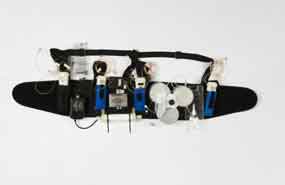
"Victor Gura, MD, inventor of the Wearable Artificial Kidney, spoke at MD&M West about design considerations, obstacles, and goals involved with developing a portable dialysis device. My patients need to eat 20 to 30 pills a day," Victor Gura, MD, an internist, nephrologist, and inventor of the Wearable Artificial Kidney (WAK) told MD&M West attendees on Tuesday. "So one was making a joke. He said 'I could put them in a bowl with some dressing and have a salad'. The bottom line is it's a burden and it's also expensive."
At MD&M West: A Future in Wearable Organs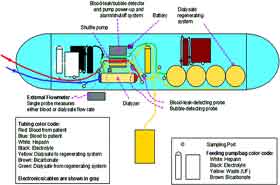
"Things have evolved, is what Dr. Victor Fura, board-certified internist, nephrologist, and inventor of the Wearable Artificial Kidney (WAK), stated in his session, Unmet Needs of Wearable Organs, at MD&M West 2019. While reminiscing and going through medical devices of the past, Fura notes that the very first pacemaker was as large as a washing machine."At first, you couldn't go around and go shopping at Walmart with these things," says Fura. But things have evolved."
Materials Today - Urea Filtration By 2D Material Could Lead To Dialysis On The Go
"For more than three million people around the world, kidney failure is a life-altering diagnosis, if not a life-threatening one. While about 17% of people in the US with end-stage kidney disease are now getting transplants, the average time spent waiting is three to five years. And much of that time is consumed by planning for, receiving and recovering from treatment. These people spend several hours multiple times each week attached to a dialysis machine that cleans the toxins from their blood – easing the workload on their kidneys."
Wearable Artificial Kidney Update: CKD Human Trial Successful Outcomes & Additional Positions Open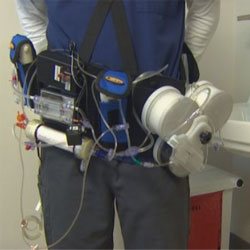
"I just finished my Human Trial with the Wearable Artificial Kidney (WAK)! It was incredible," a Dialysis patient recently wrote. Hence, trials for the Artificial Wearable Kidney (also known as the Wearable Artificial Kidney) have begun and initial reports appear to be promising; including some patients who took part in the initial Human Trials reporting that their Blood Pressure "ran normal" when typically they had challenges with Hypertension (High Blood Pressure) or Hypotension (Low Blood Pressure). Moreover, patients reported no dizziness or cramping, good lab results, and feeling, "normal as ever, for being on Dialysis."
ECRI - Health Technology Trends

"Data from the first U.S. clinical trial of a wearable artificial kidney device for hemodialysis was released at the annual American Society of Nephrology conference. Health Technology Trends spoke with the device inventor, Dr. Victor Gura, about trial results, accelerated regulatory pathway efforts and the next steps for this device."
ASN Kidney News - The Wearable Artificial Kidney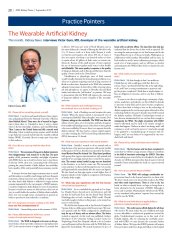
American Society of Nephrology interviews Dr. Victor Gura, developer of the wearable artificial kidney, in this issue of Kidney News.
WFMZ-TV Health Beat - Artificial Kidney: Freedom for Dialysis Patients
SEATTLE - Toby Munoz Jr. sits in a chair three times a week for up to five long hours at a time. "And it just drives me up a wall. I'm not a sit-down person; I can barely make it through a movie at a theater," Munoz explained.
Munoz needs dialysis to do the work of his failing kidneys, read how the WAK™ has changed his life.
Wearable Tech Goes to the Doctor: UW to Test "Wearable" Artificial Kidney
Undergoing dialysis is a constricting process; a patient has to sit in a chair attached to a machine for hours at a time, multiple times a week. But soon, things could change.
For patients with kidney problems who need the help of a machine to filter their blood, a new device that will be tested at the University of Washington could provide hope for a more mobile future.





